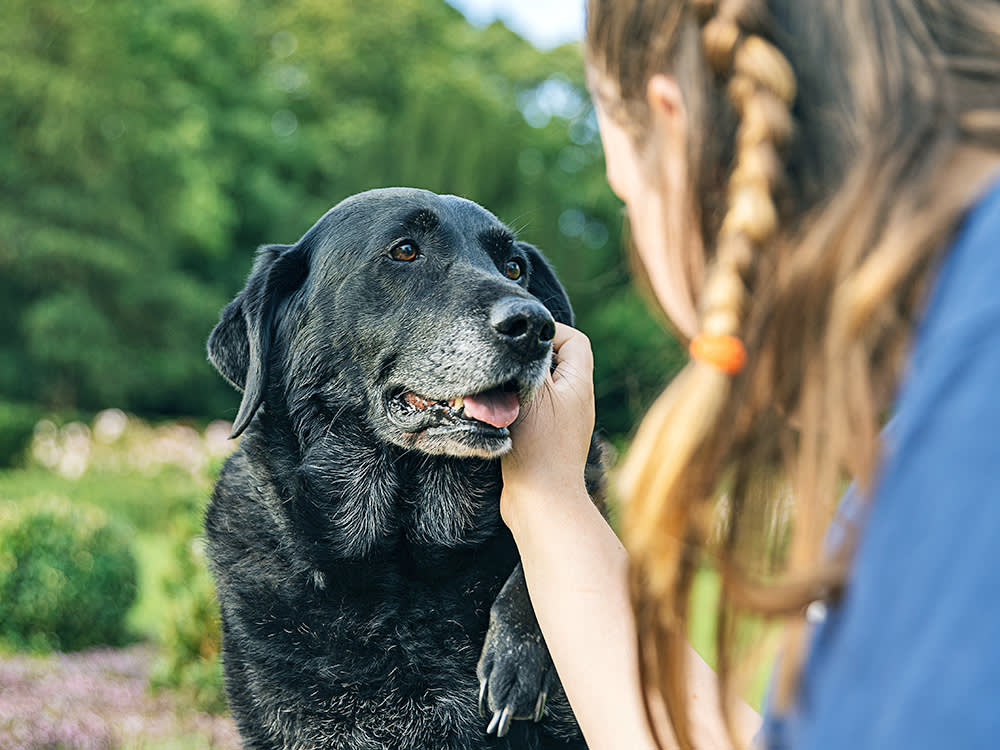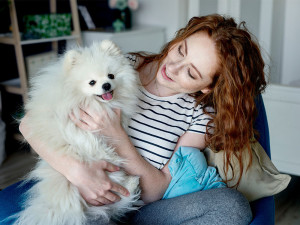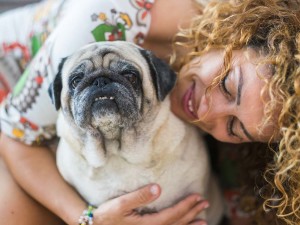10 Questions to Ask Yourself Before Deciding to Put Your Pet Down
You may need some help making this very hard decision.

Share Article
Saying goodbye to your pet — your best pal — is never easy. Whether you raised them from a tiny puppy or kitten or welcomed them into your life later on, the pain of letting go can feel overwhelming. And it’s not just their death itself that hurts; it’s watching them slow down as a senior and suffer as the end draws near that can truly break your heart.
While pain and death are inevitable parts of life, as a pet parent, you have the power to ease your baby’s suffering. You can treat their ailments, manage their pain, and when the time comes, you can choose to put them down rather than allowing them to hurt. In fact, euthanasia may be the final and greatest act of love you can offer your pet, even if it comes with a heavy emotional cost.
“We never want to say goodbye to our beloved animal companions, and this can cause pet guardians to wait as long as possible before finally deciding to let them go,” says Kate LaSala, companion animal death doula and grief counselor. “They may even hold out hoping for a ‘natural death,’ but often this causes the animal to suffer unnecessarily.”
Shifting your focus from your own pain to your pet’s quality of life can make the decision more bearable, but there’s no way to avoid the pain of loss entirely. You can’t go around it. You can only move through it with love, compassion, and consideration.

Be kind to yourself during this process. Talk to your veterinarian, your partner, a counselor, or a death doula for support. And ask yourself these questions to help determine whether your pet’s time has truly come. Remember, it’s important to speak to a vet about your pet’s specific symptoms so they can weigh in with their expertise.
Question 1: Is your pet still experiencing joy?
Do they still seek affection? Do they show interest in toys, people, or food? Do they get excited about walks, playtime, or familiar routines?
“What it really boils down to is happiness,” veterinarian Dr. Randall Cannonopens in new tab says. “The goal should not be to keep them alive as long as possible, but to keep them happy as long as possible.”
If your pet is merely existing — without pleasure or engagement — ask yourself if that’s truly a life worth prolonging.
Question 2: Is your pet eating and drinking normally?
Loss of appetite and dehydration can be common signs that a pet is nearing the end. You can try enticing them with treats or supplements, but ultimately, you can’t force an animal to eat or drink if they don’t want to.
Allowing them to deteriorate into a state of hunger or dehydration can increase suffering, but so can pressuring them to eat when they’re not able. Pay attention to what your pet is telling you through their behavior, and let that guide your response.
Question 3: Is your pet still mobile?
Can they walk, use the litter box, or access food and water on their own? Are they limping, collapsing, or unable to get comfortable?
“Some pets are miserable if they are not mobile, while others take it like it is nothing,” Dr. Cannon says. What matters is how your pet seems to feel about their limitations. Track their mobility and how they respond to it over time, because what they tolerate today may frustrate or distress them tomorrow.
Question 4: Is your pet hiding, withdrawing, or acting aggressively?
Animals often withdraw when they’re in pain or near the end. They may hide, sleep in unusual places, or lash out when touched. Try not to take it personally. These behaviors are not signs that your pet no longer loves you. They are signs that they may be in pain and unwell.
Question 5: Is your pet able to maintain their personal hygiene?
If your pet can’t keep themselves clean — and won’t let you help — they may be at greater risk for infection and discomfort. Some animals don’t mind being cleaned; others resist it entirely. When hygiene becomes a burden that they can no longer manage or tolerate, it’s a red flag.
Question 6: Are there more bad days than good?
This can be hard to judge, especially if you’ve slowly adjusted to your pet’s decline.
Try keeping a log for a week or two. Track the times when your pet seems comfortable versus when they seem distressed, lethargic, or in pain. Share it with your vet to gain perspective. Remember: One bad moment doesn’t make a bad day, and one good day doesn’t erase an overall decline.
Question 7: Is my pet suffering and can that suffering be managed?
Sometimes, suffering is obvious. Other times, it’s quiet and gradual. If your pet has a terminal illness, palliative care may help ease their pain, but it might not eliminate their pain and distress entirely.
“If your pet has a terminal illness and is starting to decline, you may want to consider euthanasia sooner rather than later, so they can go out on a high note,” Dr. Cannon says. If your pet’s condition isn’t terminal, make sure to discuss all treatment options before making a final decision.
“Sometimes people choose euthanasia before really giving treatment a chance,” he adds. “They may assume the diagnosis is hopeless, but we often don’t know unless we explore it.”
Question 8: Am I waiting for a “natural death” to avoid the pain of choosing euthanasia?
It’s tempting to hope your pet will pass peacefully in their sleep. But more often, natural death brings prolonged pain, confusion, or crisis.
“Euthanasia, which means ‘good death,’ is the last gift of true love we can give our animals,” LaSala says. If you’re waiting for nature to take its course, consider whether that delay is truly for your pet — or to postpone your own grief.
Question 9: Am I afraid of making the wrong choice or of regretting my choice later?
This fear is universal. No one wants to get it wrong. But decisions made with love, compassion, and respect are never truly wrong.
“Understand that most decisions are made with love, even if imperfect,” says Anat Josephopens in new tab, licensed clinical social worker and psychoanalyst. “Allow yourself to grieve without judgment.”
Question 10: How do I want my pet’s story to end?
Would you rather they pass while they can still enjoy a cuddle or a snack — or only after they’ve lost all ability to enjoy life? Each “good” day toward the end may come at an increasing cost. Only you can decide when that cost becomes too great.
Making your decision and moving forward
If you’re still unsure, seek help. Talk to your vet, a grief counselor, a psychologist, or a death doula.
“Often pet parents are too emotionally involved to see their animal’s decline clearly,” LaSala adds. “Working with an impartial outside party can be a big help.” This support can also be crucial when other family members — especially your partner and co-pet parent — disagree with your decision.
“The loss of a pet can cause serious tension in a relationship,” Joseph says. “Protect your relationship by acknowledging each other’s grief ... You may grieve differently, but empathy and respect can keep you connected.”
If you decide euthanasia is right, talk to your vet. Ask about at-home euthanasia if you want your pet to pass in a familiar, peaceful space. Plan ahead for cremation or burial as costs and logistics can vary, and you’ll want those decisions made before the moment arrives. Then, when the time comes, say goodbye. Say it in whatever way brings peace to you and your pet. Light a candle. Share memories. Write something just for yourself. Your love won’t end when your pet’s life does.
“If you’re struggling with feelings of guilt, anger, or the cycle of ‘woulda, coulda, shoulda,’ know that this is normal,” LaSala says. “Your relationship isn’t defined by those last days or hours. In the end, you loved your animal and did the best you could for them.”

Charles Manning
Charles Manning is an actor and writer based in New York City. In his free time he likes to cook, go swimming at the public pool, volunteer at the LGBTQ senior center, and foster senior and special-needs cats. His work has previously appeared in Cosmopolitan, Elle, Marie Claire, Harper’s Bazaar, Seventeen, and Nylon.
Related articles
![woman with red hair holds senior Pomeranian dog]()
How to Take Care of a Senior Dog
As dogs age, it’s important to recognize both physical and mental changes they may be experiencing.
![Curly haired blonde woman hugging her old pug dog]()
How to Care For Your Older Dog
Learn how to make their senior years as comfortable as possible.
![]()
13 Products Your Senior Dog Needs
From doggie diapers to toe grips, this gear will help your pet thrive through their golden years.
![blonde woman holding older white dog]()
Why People Say Pets Cross the “Rainbow Bridge” When They Die—And How It Helps
It’s become part of the pet-parent vernacular as a source of comfort.
![Woman comforting her friend who has lost a pet.]()
10 Ways to Support a Friend Who Is Grieving a Pet
Not everyone understands how hard it is to lose a pet. You can be the person who does.




